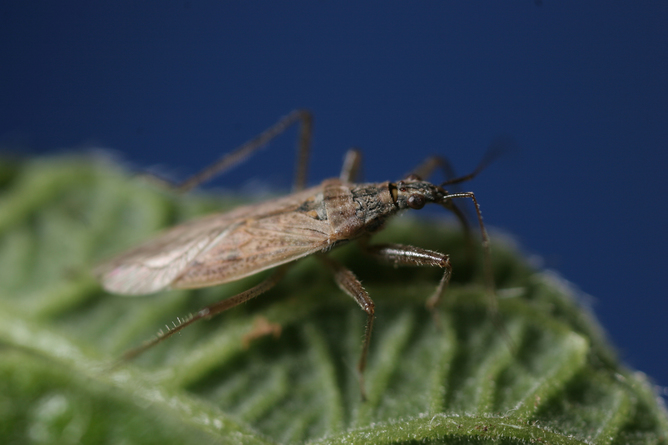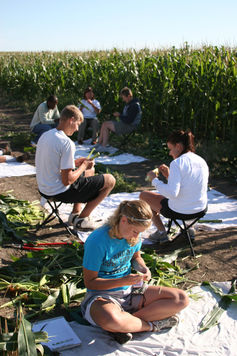Biodiversity performs critical ecosystem functions that cannot be replaced indefinitely by technology, such as pesticides and herbicides. This includes a diverse population of insects on farms.
In a study of corn farms across the Northern Great Plains, we found that farms with lower insect biodiversity have more pests. The findings suggest that farming practices that promote insect biodiversity may be an effective way to control pests.
The more connections we can make between diversity and the benefits that it provides, the more we will enable the design of resilient food production systems that are ecologically sustainable in the long term.
Biological networks
Pests are a major threat to food production, and pest control efforts can produce unintended consequences to the environment and to society, such as toxicity to beneficial species and wildlife, the contamination of soil and water, and increased costs for food production.
Previous researchers have documented that species diversity within agroecosystems can reduce pest populations, but often these studies favor controlled, simplified experiments rather than focusing on realistic communities observed on operating farms.

One reason for focusing on simplified systems is that natural insect communities are typically very diverse, and understanding how species interact within biological networks can become very complicated.
Network analysis is a useful tool for studying how agents – for example, people, websites, etc – within a complex network interact to affect certain processes, such as how information is disseminated through social groups. This approach to understanding large networks may also have applications in understanding how biological networks produce a desired service, in our case pest management.
Corn is currently the most intensively produced crop in North America, with approximately 5% of the land surface of the continental United States devoted to this single plant species. Because of its high value, substantial resources – approximately US$3.2 billion in 2013, according to the National Agricultural Statistics Service – are spent annually on controlling pests like corn rootworms, European corn borers and other caterpillars and aphids. Research has shown that diversity seems important in keeping these pests in check, but what particular attributes of an entire biological network contribute to pest management have not been well-explored.
Insect communities
We sampled 53 corn farms across the Northern Great Plains, on the western edge of corn production in the US.
In each field, we identified all insect species (“insects” being defined as all animals with more than four legs and fewer than two legs) in the plant foliage when they shed pollen. This time in the corn’s life cycle is when insect communities are most abundant, and this time of year all major pests co-occur. And we made sure that insecticides or GM crops that might influence corn insect communities were not used in these fields. We identified relative numbers of 106 taxonomic groups of insects on these farms.

In our analysis, we found that more biodiverse cornfields had fewer pests. More specifically, cornfields with high species diversity and a more even distribution in species abundances had fewer pests.
Interestingly, the number of species and the abundance of individual insects in a cornfield were not correlated with pest density.
What this means is that it isn’t species richness and abundance within a community that is correlated with pest abundance. But rather, it’s the balance of species within these communities that seems to be tied to lower pest populations.
Next, we grouped the cornfields based on how many pests we found. We created a network for each of the insect communities that we found at each separate pest density. These networks are based on the relative abundances of the insects in the community; if the abundance of two species were significantly correlated with one another, we drew a link between these species. It’s a new approach to analyzing the biodiversity of ecological networks.
Money saver
We found that communities with stronger networks – that is, more linked species – had fewer pests. Not only this, but network centrality was important; communities with several groups of highly linked species, including insects that prey on others, don’t have the pest problems that loosely linked networks have. Thus, in addition to species diversity, the strength of interactions among species within a community seem to be related to when and where pest outbreaks occur.
This research suggests that practices that reduce diversity in cornfields will aggravate pest problems over time. Unnecessary pesticide inputs and simplification of agroecosystems are destined to require even more pesticides to replace the lost functions of biodiversity and maintain these food production systems.
More importantly, our data suggest that designing cropping systems with high diversity will require fewer insecticide inputs and will save farmers money.
Pieces to this puzzle are already in place: we know that reducing soil disturbance, increasing crop rotation diversity, and including cover crops are important in reducing pests. But we don’t always have a complete picture of how these practices work to reduce pests.
Long-term food security is contingent on inventing production systems that are resilient to stressors like pests. Biodiversity within food systems provides quantifiable and valuable services to society, of which pest management is one.
July 31, 2015 2.04pm EDT
The conversation.com
